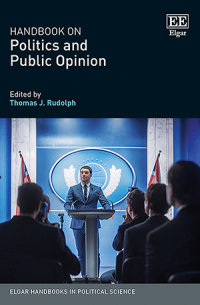Hardback
Inclusivity in Mediation and Peacebuilding
UN, Neighboring States, and Global Powers
9781800880511 Edward Elgar Publishing
这本书尖端照明生产的关键eristics of inclusivity in mediation during armed conflicts and post-conflict peacebuilding. Daisaku Higashi illustrates the importance of mediators taking flexible approaches to inclusivity in arbitration during armed conflicts, highlighting the crucial balance between the need to select conflicting parties to make an agreement feasible and the need to include a multiplicity of parties to make the peace sustainable. Higashi also emphasizes the importance of inclusive processes in the phase of post-conflict peacebuilding.
More Information
Critical Acclaim
Contents
More Information
这本书尖端照明生产的关键eristics of inclusivity in mediation during armed conflicts and post-conflict peacebuilding. Daisaku Higashi illustrates the importance of mediators taking flexible approaches to inclusivity in arbitration during armed conflicts, highlighting the crucial balance between the need to select conflicting parties to make an agreement feasible and the need to include a multiplicity of parties to make the peace sustainable. Higashi also emphasizes the importance of inclusive processes in the phase of post-conflict peacebuilding.
Higashi draws on first-hand experience as a team leader for reconciliation and reintegration in UNAMA, as well as interviews with leaders in conflicting states and UN missions, and recommends various roles for the UN, neighboring states and global powers in mediation during and after armed conflicts. Utilizing extensive field research and analysis, the book focuses on conflict regions in Afghanistan, South Sudan, Syria, Yemen, Iraq and East Timor to demonstrate the significance of addressing inclusivity in mediation and peacebuilding with different approaches.
Engaging with a range of empirical sources to make key policy recommendations, this book is crucial reading for practitioners working in mediation and peacebuilding, particularly UN officials, think-tank experts, government officials and NGOs. It will also benefit scholars and students of political science and international relations in need of unique, real-world accounts of global mediation, peacebuilding and conflict management.
Higashi draws on first-hand experience as a team leader for reconciliation and reintegration in UNAMA, as well as interviews with leaders in conflicting states and UN missions, and recommends various roles for the UN, neighboring states and global powers in mediation during and after armed conflicts. Utilizing extensive field research and analysis, the book focuses on conflict regions in Afghanistan, South Sudan, Syria, Yemen, Iraq and East Timor to demonstrate the significance of addressing inclusivity in mediation and peacebuilding with different approaches.
Engaging with a range of empirical sources to make key policy recommendations, this book is crucial reading for practitioners working in mediation and peacebuilding, particularly UN officials, think-tank experts, government officials and NGOs. It will also benefit scholars and students of political science and international relations in need of unique, real-world accounts of global mediation, peacebuilding and conflict management.
Critical Acclaim
‘”The more the merrier” is the usual approach for mediation and peacebuilding, but Daisaku Higashi’s wide-ranging field research identifies the pay-offs from a far more nuanced approach to inclusivity. His compelling recommendations are tailored for the UN, regional organizations, neighbors, and major powers.’
– Thomas G. Weiss, CUNY Graduate Center, US
– Thomas G. Weiss, CUNY Graduate Center, US
Contents
Contents: 1. Introduction: civil wars and inclusivity 2. Debates on inclusivity in mediation and peacebuilding 3. Challenges of inclusivity in peace negotiations: the case of South Sudan 4. Challenges of inclusivity in peace negotiations: the case of Afghanistan 5. The role of the UN, neighboring states, and global powers in mediation: the case of Syria 6. The role of the UN, neighboring states, and global powers in mediation: the case of Yemen 7. Inclusivity in post-conflict peacebuilding: the cases of Iraq and East Timor 8. Conclusion: theoretical contributions, policy implications, and remaining questions Index





